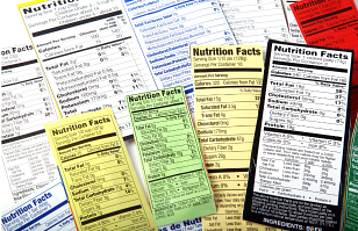
If you want to ensure your furry companion thrives, a good starting point is paying close attention to what’s in their food bowl and choosing the best dog food for your four legged family member. You’re going to find out about the critical role that breed, age, and energy levels play in your dog’s dietary requirements.
Dogs are like us in many ways, especially when it comes to needing a balanced diet. Just don’t focus too much on the plethora of options out there; instead, choose something that resonates with your dog’s nutritional needs. Proteins for muscle repair, carbohydrates for energy, fats for a healthy coat and skin, vitamins, and minerals for overall body function are vital.
Puppies, adults, and senior dogs have different nutritional needs, and the food label should guide you. In my opinion, the right life stage formulation is key to providing optimal nutrition. Puppy formulas, for example, are rich in calories and nutrients necessary for growth.
You can always adjust your approach down the road as your dog’s needs change due to age or health. That’s the strategy I like to leverage, ensuring every meal supports my pup’s health and happiness.
Now, after understanding the what and why of your dog’s nutritional needs, let’s talk a bit about how you can evaluate the quality and transparency of the food you’re choosing. This brings us to dissecting dog food labels – something that can feel like decoding a cryptic message, but I’m here to help you with that.
Analyzing Dog Food Labels: Transparency in Ingredients

I’m going to give you the scoop on what to look for when examining dog food labels. The ingredients list is your go-to section. It’s government-mandated to list all components in descending order by weight. That means the first few ingredients are crucial; they make up the majority of what your pup will consume. High-quality dog foods often start with meats or meat meals as the main components.
Now what about all those additives we often hear about? Additives can be a mixed bag. Some are great for your dog’s health, like added vitamins or probiotics. However, you want to steer clear of artificial colors, flavors, or preservatives such as BHA, BHT, and ethoxyquin, which can be questionable in the sense of long-term health effects. Instead, choose something that uses natural preservatives like tocopherols (a form of Vitamin E).
You’re also going to find out about the ‘guaranteed analysis.’ This gives you percentages of crude protein, fat, fiber, and moisture. ‘Crude’ just means the method of testing, it doesn’t speak to the quality of the nutrient. Higher protein and fat percentages are typically a good sign in dog food, particularly if they come from animal sources.
Guess what? You’re becoming quite the expert in picking out the best chow for your furry friend. Once you’ve got a handle on labels, taking a closer look at the various food options becomes the next step. And there’s a lot to consider—like whether to go for dry kibble, wet food, a raw diet, or something else entirely.
The Variety of Options: Dry, Wet, Raw, and Beyond
When you’re trying to pick the best food for your furry friend, you’re going to run into a lot of options. Dry kibble is a popular choice, and it’s not hard to see why. It’s convenient, has a long shelf-life, and can be great for your dog’s teeth. But, don’t forget, there’s also wet food. It’s richer in flavor and moisture, which can be a big plus, especially if your dog isn’t keen on drinking water or is a very picky eater.
Now, raw diets have been getting a lot of buzz. They aim to mimic what dogs would eat in the wild. But before you go this route, you should know it can be risky because of the chance of bacterial contamination or nutritional imbalances. If you’re considering raw, definitely talk with your vet first.
And what about fresh dog food and prescription diet options? These can cater to specific health needs and could be worth exploring if your dog has allergies or other dietary restrictions. Fresh diets, often refrigerated or freeze-dried, can provide whole, unprocessed ingredients. On the flip side, prescription diets are specially formulated for certain health issues and should be used under veterinary supervision.
No matter which route you choose, the goal is to provide a balanced diet that supports your dog’s well-being. Up next, I’m going to help you understand what to specifically look for in dog food to make that health-conscious choice.
Making a Health-Conscious Choice: What To Look For

In my opinion, when it’s time to pick the best dog food, the decision shouldn’t be based on marketing gimmicks or the price tag alone. It’s about what’s inside that bag, can, or box that counts. You want to ensure that any dog food you choose adheres to the Association of American Feed Control Officials (AAFCO) standards. These guidelines help guarantee that the food is nutritionally complete and balanced.
Choose something that resonates with you but also matches your dog’s specific health requirements. For example, some dogs may do better with grain-free options, while others might need a diet lower in calories. Don’t worry too much about specific brands; focus on the ingredient list. Avoid foods packed with fillers or artificial preservatives and colors, which don’t offer your dog any nutritional benefits.
If your dog has special dietary needs or health issues, the best move is to consult your vet. They can recommend a prescription diet that’s tailored to manage specific conditions, such as kidney disease or obesity, to name a few.
Remember, the impact of food goes beyond just satisfying hunger. What you feed your dog can have a significant influence on their energy levels, coat health, and overall vitality. I really hope that you choose a dog food that contributes to a long, healthy, and happy life for your furry friend.
As always, feel free to leave any questions or comments for us below.

